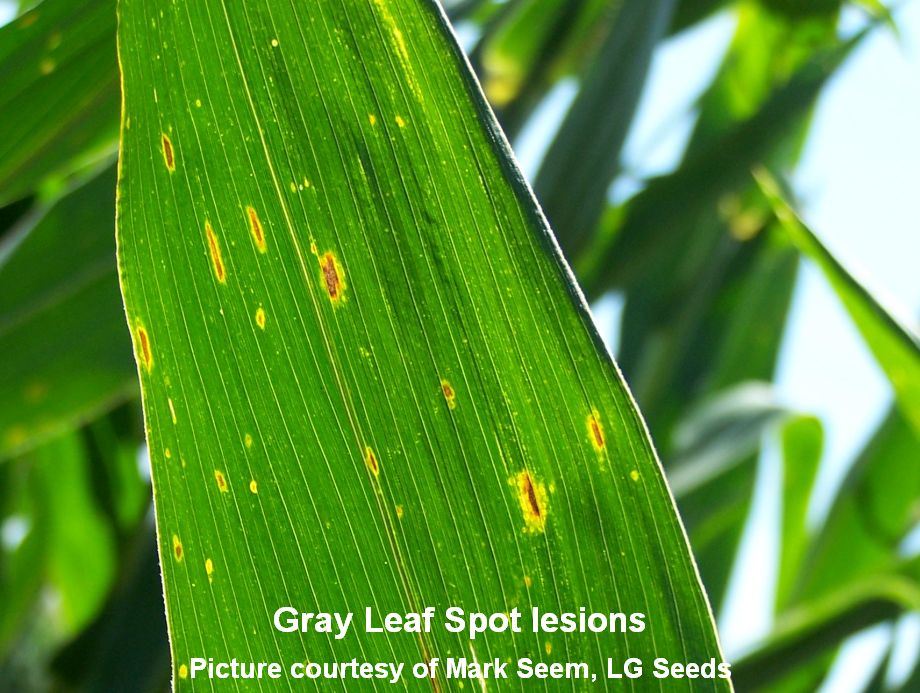AGRONOMICSUPPORT
YOU CAN TAKETO THE FIELD
Gray Leaf Spot
.png?sfvrsn=808502df_0&MaxWidth=200&MaxHeight=&ScaleUp=false&Quality=High&Method=ResizeFitToAreaArguments&Signature=7816FC187A13E2A9B798618786E74FC758E3C9A5) Now that harvest is completed, it is time to start thinking about next year and making seed corn selection decisions. While doing this, it is important to look back at this past year’s performance and evaluate how each product responded to the environmental conditions such as disease. An important disease to consider while making hybrid selection is gray leaf spot.
Now that harvest is completed, it is time to start thinking about next year and making seed corn selection decisions. While doing this, it is important to look back at this past year’s performance and evaluate how each product responded to the environmental conditions such as disease. An important disease to consider while making hybrid selection is gray leaf spot.Gray leaf spot is a persistent and economically damaging fungal disease of corn across the United States. Gray leaf spot lesions elongate into rectangular spots that are brown or gray. Major leaf veins restrict the expansion of lesions which gives them a very blocky, rectangular appearance. However, lesions can become large irregular shaped areas of necrotic tissue under favorable conditions.
The fungus overwinters on infected corn residue. This residue produces spores in the spring that splash onto young corn plants when it rains. Conditions favoring the development of the disease are prolonged warm (75-85⁰F) and humid (>90 percent relative humidity) periods.
If you have had gray leaf spot in the past, there are three steps to managing the disease.
- The first, and possibly most important, is by selecting hybrids that are known to have high tolerance to the disease. There are no hybrids that are immune to gray leaf spot but there are hybrids that have higher levels of tolerance and it is important to select products that have higher ratings in your LG Seeds Resource Guide.
- The second step is residue management. High residue situations such as continuous corn or no-till are more susceptible to gray leaf spot infection. Rotating one year away from corn and doing a tillage pass is recommended to stop disease development in a field with a history of gray leaf spot. For strict no-till operations, it may be necessary to rotate away from corn for more than one year.
- The third step is the use of fungicide. There are many fungicides labeled for control of gray leaf spot. Depending on the application method for a grower’s operation, using a fungicide can be quite costly so it is important to scout fields just prior to tassel to see if there is a presence of the disease and whether it is severe enough to warrant an application of fungicide.
In summary, gray leaf spot can cause major yield loss if not managed properly. The first step to managing it properly is selecting hybrids that are rated highly against the disease. Contact your Technical Team Agronomist for help with this and/or other agronomy questions.
Download a copy of this technical bulletin here: Gray Leaf Spot
Sources and Additional information






Technical Team Agronomist